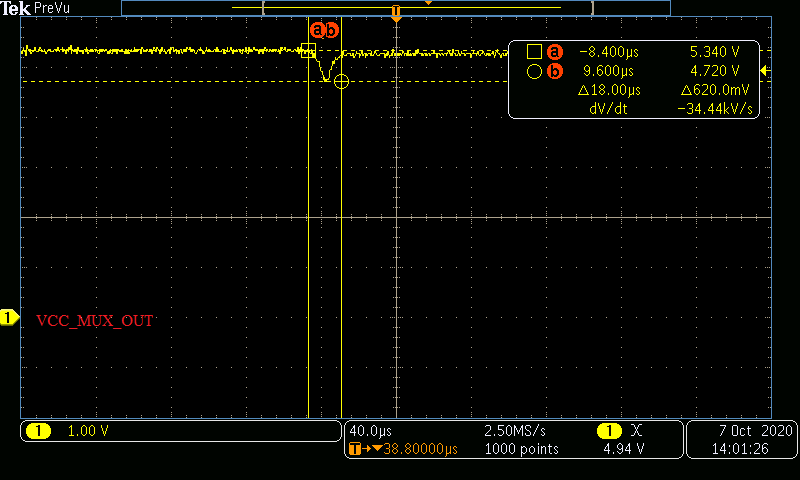Hi TI Team,
Good day.
We are facing one issue in our designed circuit with TPS2121 Power Mux.
Please find the attached images for your reference
We have used this circuit for Switching from Main power to Super Capacitor for graceful shutdown feature.
The issue is, the output voltage dropping (VCC_MUX_OUT) to Zero while Switching to Super Cap power (IN2). But this problem is happening sometimes only.
Mainly observed this issue while consuming more current like 1Amps through Mux. In low load condition like 400mA, we haven't faced this issue
And also we observed this issue while having load variation in the output.
Please let us know your suggestion, is there any problem in the designed circuit? Why Mux Output Voltage is dipping?
Thanks & Regards,
Muneeswaran R





